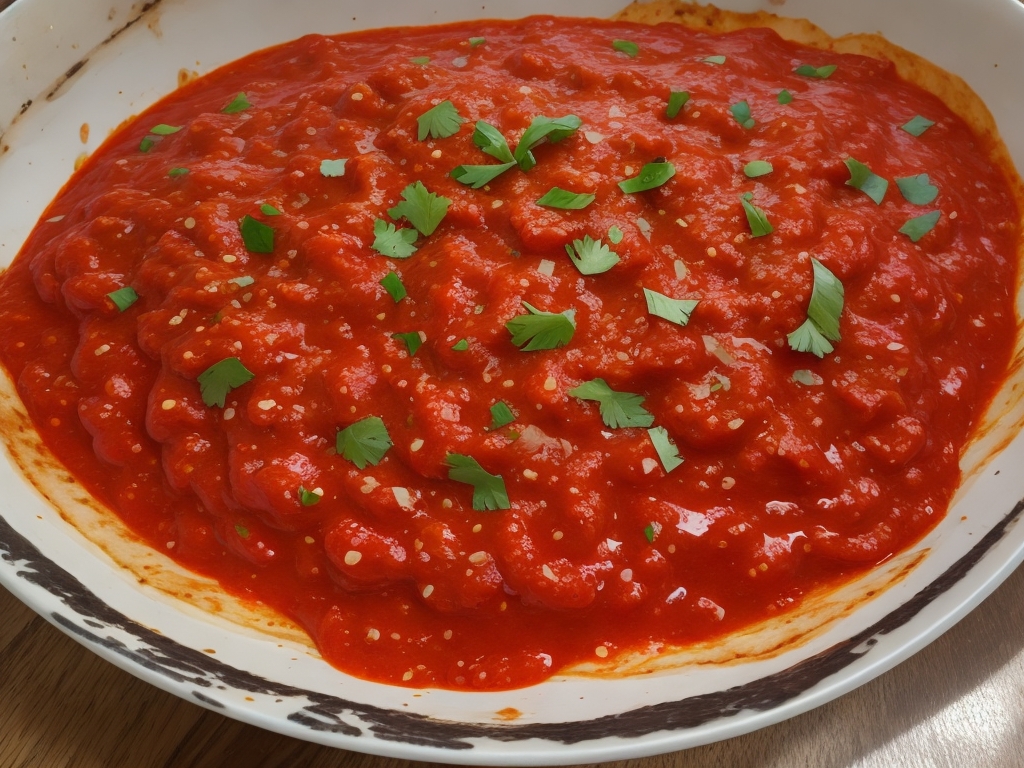Authentic Italian pizza is a culinary delight cherished worldwide for its simplicity and rich flavors. At the heart of every great Italian pizza lies its sauce—a vibrant, tangy blend that enhances the taste of the crust and toppings. Crafting the perfect Italian pizza sauce requires attention to detail and quality ingredients. In this article, we’ll explore the essential elements and steps to create an authentic Italian pizza sauce that will elevate your homemade pizzas to a new level.
The sauce is not just a base but a crucial component that binds the flavors of the pizza together. It provides a balance of acidity, sweetness, and savory notes that complement the toppings and crust.
The Role of San Marzano Tomatoes
San Marzano tomatoes are the gold standard for Italian pizza sauce. Grown in the rich volcanic soil of the Campania region in Italy, these tomatoes are prized for their sweet flavor, low acidity, and meaty texture. Their natural sweetness reduces the need for added sugar, making them ideal for pizza sauce.
Balancing Flavors with Fresh Ingredients
Away from tomatoes, fresh basil, oregano, garlic, onions, and olive oil are central ingredients in Italian pizza sauce. Each ingredient plays a crucial role in enhancing the overall flavor profile of the sauce.

Ingredients
Preparing Steps
- Start by gently crushing the San Marzano tomatoes with your hands or a blender. Leave them slightly chunky for texture.
- In a large pan, warm olive oil on average heat. Add minced garlic and finely chopped onions. Sauté until soft and translucent, being careful not to brown them.
- Add the crushed tomatoes to the pan with the garlic and onions. Season with salt and pepper to taste. Take the sauce to a mild boil.
- Add fresh basil and oregano to the simmering sauce. Let it cook lightly for at least 30 minutes to allow the flavors to mix together. Taste and adjust seasoning if needed.
Benefits Of Italian Pizza Sauce
- Enhances Flavor: Italian pizza sauce adds a rich, tangy flavor that complements the cheese, toppings, and crust of the pizza.
- Balances Sweetness and Acidity: It provides a perfect balance of sweetness from ripe tomatoes and a hint of acidity that cuts through the richness of cheese and toppings.
- Natural Ingredients: Made primarily from fresh, natural ingredients like San Marzano tomatoes, olive oil, garlic, and herbs, it avoids artificial additives and preservatives.
- Rich in Lycopene: Tomatoes used in Italian pizza sauce are rich in lycopene, a powerful antioxidant known for its health benefits.
- Versatile: Besides pizza, Italian pizza sauce can be used in pasta dishes, as a dipping sauce for breadsticks, or as a base for other Italian-inspired recipes.
- Easy to Make: While traditional Italian pizza sauce requires slow simmering for depth of flavor, it’s straightforward to prepare with basic kitchen ingredients.
- Authenticity: Using authentic Italian pizza sauce can elevate homemade pizzas to restaurant-quality, replicating the flavors found in pizzerias in Italy.
- Customizable: You can adjust the seasonings and ingredients to suit personal taste preferences, making it versatile for different culinary creations.
- Long Shelf Life: Once prepared, Italian pizza sauce can be stored in the refrigerator for up to a week or frozen for longer-term storage, making it convenient for meal planning.
- Cultural Experience: Enjoying Italian pizza sauce is not just about taste but also about experiencing a part of Italian culinary heritage, connecting food with culture and tradition.
These benefits highlight why Italian pizza sauce is a cherished component of authentic Italian cuisine and a favorite among pizza enthusiasts worldwide.
Tips for Perfecting Your Sauce
- Use Whole Peeled Tomatoes
Whole peeled San Marzano tomatoes are preferred over diced or crushed tomatoes as they retain more flavor and texture.
- Simmer Slowly for Depth of Flavor
Cook the sauce over low heat to develop a deep, rich flavor. Stir occasionally to prevent sticking.
- Adjust Seasonings to Taste
Taste the sauce regularly and correct seasoning as needed, adding a pinch of sugar for acidity if necessary.
Common Mistakes to Avoid
- Using Overly Processed Tomatoes
Avoid canned tomatoes with added preservatives or flavors, as they can alter the authentic taste of the sauce.
- Rushing the Cooking Process
Patience is key when making Italian pizza sauce. Rushing can result in underdeveloped flavors.
- Overcomplicating with Too Many Ingredients
Stick to the basics—tomatoes, olive oil, garlic, onions, basil, and oregano. These simple ingredients work harmoniously together.
FAQs
- FAQ 1: Can I use regular canned tomatoes instead of San Marzano?
While San Marzano tomatoes are recommended for their flavor, you can use high-quality canned tomatoes in their absence.
- FAQ 2: How long should I simmer the sauce for?
Boil the sauce for 30 minutes to let the flavors to mix together. Longer boiling can deepen the flavors.
- FAQ 3: Can I make the sauce ahead of time?
Yes, Italian pizza sauce can be made ahead and stored in the refrigerator for up to a week, or frozen for longer storage.
- FAQ 4: What should I do if my sauce is too acidic?
Add a pinch of sugar or a splash of balsamic vinegar to balance out the acidity.
- FAQ 5: Can I freeze the leftover sauce?
Yes, portion the sauce into freezer-safe containers and freeze for up to 3 months. Soften overnight in the refrigerator before using.
Crafting the perfect Italian pizza sauce is an art form that requires patience and attention to detail. By using high-quality ingredients like San Marzano tomatoes, fresh herbs, and aromatic garlic and onions, you can create a sauce that enhances the flavors of your homemade pizzas. Remember to simmer the sauce slowly to develop a rich, robust flavor profile that captures the essence of Italian cuisine.




